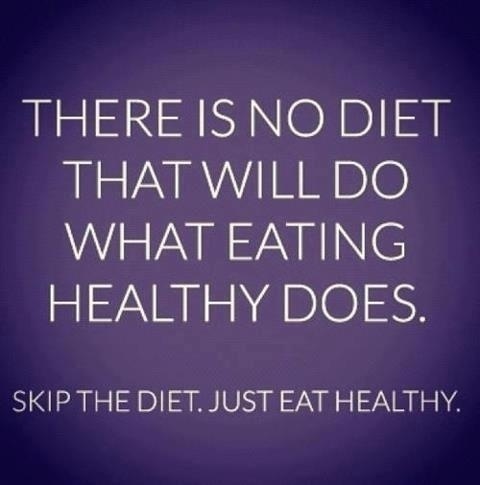So I have had a handful of people ask me how we eat. I typed this up for a friend but figured why not share it. Maybe it will be helpful for someone maybe not. But it doesn’t hurt to share right? 🙂 So this is basically how our day’s go.
We don’t do paleo or any other diet that you have to eat specific things. We like cheese, beer, wine, ice cream too much to do those. lol We try to stick to low to med glycemic foods (Mostly low but mediums are def. in the mix) and pretty much stay away from any high. There is a lot of information out there on glycemic index and I think it’s key to eating right. Here is a couple pages I found kinda fast but def look into the information. Its not a fad, or a diet its just basically eating healthy food that will help your body sustain energy. http://www.mayoclinic.org/healthy-living/nutrition-and-healthy-eating/in-depth/glycemic-index-diet/art-20048478http://www.whfoods.com/genpage.php?tname=faq&dbid=32
I eat egg whites scrambled with spinach almost every morning. I have nothing against the whole egg we just so many eggs I don’t want to overdo it b/c they are high in cholesterol. Sometimes I throw in some feta to. (I was eating cereal but I haven’t in 3 months now at all and I think that has made a difference plus I don’t even crave it anymore) That’s been my staple breakfast oh with toast. We buy Rudi’s Bread and its great full of what you need and none of what you don’t want. And its tasty! And so far we love all of it. We have tried the English muffins, wraps and most of the breads. http://foodbabe.com/2014/02/24/healthiest-bread-on-the-market/
We also started the whole butter in coffee thing also. One cup a day of it and nothing other than butter added. (Then I drink I’m sure way to much Black coffee after that. lol) http://nextshark.com/5-reasons-why-everyone-is-putting-butter-in-their-coffee/
I also just started making steal cut oats. They are one of the least processed oats and you can make a batch in the slow cooker and have them all week! I’m on my second week of doing it my son and husband love them. I did apple and cinnamon last week and blueberry and banana this week. I added more spices to both then it called for. It makes mornings easy and they have something healthy and yummy. http://www.hungryhealthygirl.com/2013/02/19/steel-cut-oatmeal-slow-cooker/http://thealmostvegan.com/slow-cooker-apple-cinnamon-steel-cut-oats/
I eat tuna fish alot for lunch and normally with a veggie or cottage cheese (I always get 2 percent I don’t like to get lower I want that extra fat from it. Same with milk or yogurts we never have less than 2 percent) I’m still trying to come up with new lunch ideas. Anyone has any good ideas let me know! I’m always open to new ideas!!
 A Chobani Greek Yogurt (We did alot of Ingredients reading b4 going with that one) A banana and some Kind granola (It’s the best for granola again we did alot of ingredients reading plus its yummy its also at the commissary for a better price but I’ve found more flavors in Super Target) is pretty much bri and I’s regular snack. We also always keep humus in the fridge and I always have pretzels, celery, or red peppers to dip in it. Raw carrots, grapes, apples to munch on to. We get LÄRABAR bars and buddy fruits for when we are on the go.
A Chobani Greek Yogurt (We did alot of Ingredients reading b4 going with that one) A banana and some Kind granola (It’s the best for granola again we did alot of ingredients reading plus its yummy its also at the commissary for a better price but I’ve found more flavors in Super Target) is pretty much bri and I’s regular snack. We also always keep humus in the fridge and I always have pretzels, celery, or red peppers to dip in it. Raw carrots, grapes, apples to munch on to. We get LÄRABAR bars and buddy fruits for when we are on the go.
Dinner is alot of chicken, ground chicken burgers, turkey burgers (We def do more with ground chicken then turkey) Pork and sometimes beef. That’s more of a treat if we have steaks and sometimes burgers but really not too often. We eat alot of sweet potatoes we use them like we use to use regular potato’s butter sometimes some scream or a little cheese. We really use them in a lot of ways I can’t even remember the last time we got regular potatoes. We try to always do a veggie with dinner. Doesn’t always happen but we try. OH squash we cook a lot with it! I love spaghetti squash! You can sub it for spaghetti and it turns out so yummy! Oh and cauliflower Mash! I take head cut it up boil it till its soft drain it mash it (I use hand held blender) and add one small thing of cottage cheese salt and pepper and you have mash potatoes! 😀 I Love them!!!
I do a lot of searching for recipes that will not be super difficult, cost a ton of money but still yummy and healthy. Sometimes I get really frustrated with it. Lol But here’s a few that we have tried and liked. If you have any good ones send them this way please!
http://www.willcookforsmiles.com/2013/07/buffalo-chicken-burger.html
http://www.smells-like-home.com/2013/06/cheddar-jalapeno-chicken-burgers-with-guacamole/
http://boxgrl81.com/recipes/quinoa-jambalaya/
http://boxgrl81.com/recipes/paleo-pork-chops-with-caramelized-onion-and-apple-sauce/
http://boxgrl81.com/recipes/paleo-kinda-stuffed-peppers/
http://www.smokedngrilled.com/grilled-cheesy-apple-pie-chicken-burger/
http://greenlitebites.com/2010/07/05/spinach-feta-turkey-burgers/
Okay snacks- We are like kids Bri and I both need a treat at the end of the day! We have ice cream, Or Pudding cups, or some sorta small yummy treat. It’s always small and portion controlled. With fall around the corner there will all sortsa pumpkin goodness in our house! When I do bake I try to always make lighter versions or Paleo treats. So far all the ones I have made have turned out pretty yummy!
Wine/Beer we limit to once a week sometimes depending on what’s going on 2 times a week but thats not very often. It was hard at first because I like my nightly glass of wine. But now its not a issue. It’s really weird. Even beer now I never really feel like it. I guess it was just getting over that hurdle. Sometimes its hard when other ppl don’t understand why you don’t want to drink but I’ve stuck to it and I know it was a good change. Plus I get more excited now about my wine! LOL I savor it!
I’m sure you know this but be careful of anything that says fat free or low fat. Read the ingredients because most of the time they sub the fat with something and its normally more sugar and stuff you do not want to put in your body.
We try to buy a very small amount of processed foods if possible. For tomato sauce we make our own. No Jar. Chicken Broth we make our own no box. (Both taste way better also) Seasoning for example taco seasoning we make our own that way we know what is in it. Pinterest is great for that kind of stuff also. Most of my shopping now is done in the produce area of the store or at a farmers market (Buying local is a great way to go! Support your local farms!)
We stopped drinking soda and drink a ton of water But I do crave the carbonated part and found that Dasani’s new sparkling water is really good and way cheaper than Perrier. So that’s pretty much always stocked in our fridge. Oh and chocolate milk.




















